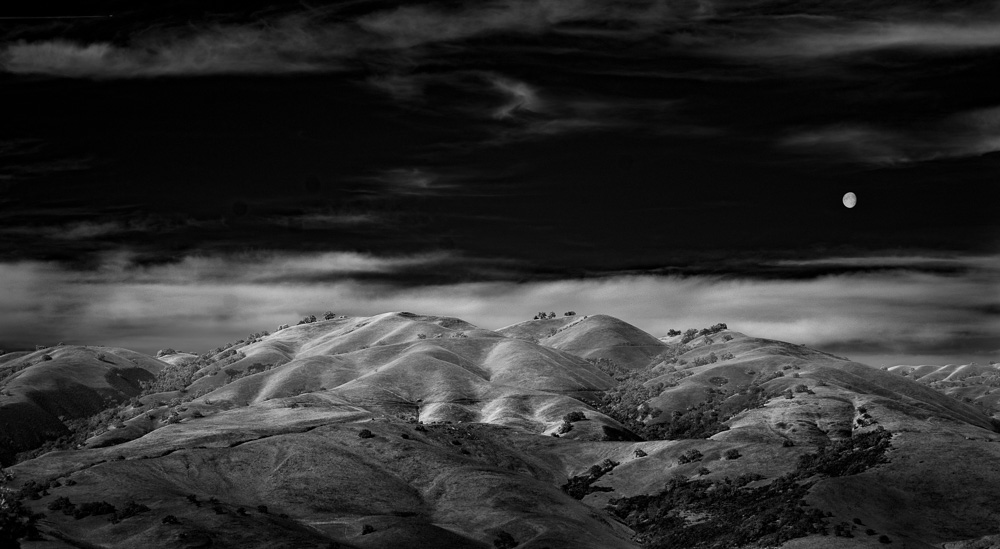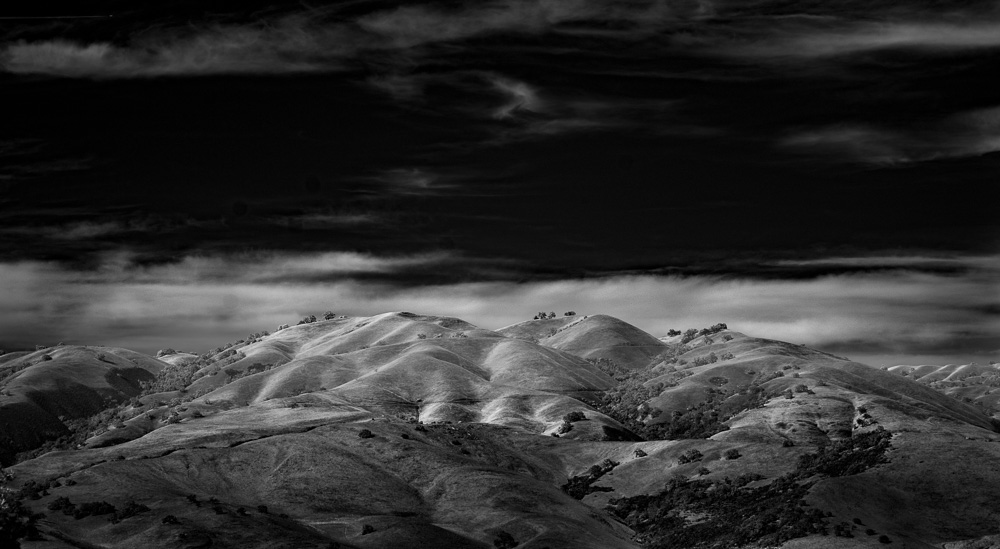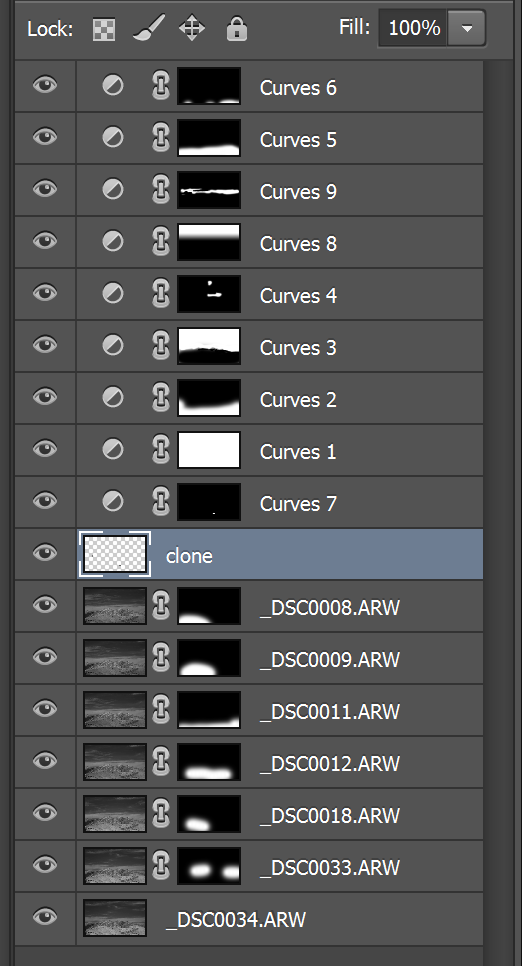Yesterday I posted this picture:
Today I’ll tell you a bit about how it was made, and see if that changes your assessment of it.
I started out with this image:
It is a seven-image composite. Here’s what the layers look like in Ps:
Except for the number of composited images, this is not that unusual for this series. I composite two or three images exposed several minutes apart about as often as I use a single exposure.
I looked at the image and I was tempted to drop a moon in there. This kind of manipulation is not something I normally do. In fact, this is the only time I remember doing something like this except as a joke. To me, it wholly different to make several exposures and combine them than it is to introduce an element that wasn’t present at all in the original scene. I resisted it, and the moon still looks foreign to me in the top picture because I know I put it there and I can’t forget that when I look at the picture.
This is not reportage, and I am disclosing what I’m doing, so there’s no ethical problem with introducing a moon that was never there as far as I’m concerned. All’s fair in art-making, and it’s the final image that matters, right?
Not really, I’m finding out as I examine my reactions to what I’ve done. I am distinctly uncomfortable with introducing gratuitous celestial objects into photographs. It’s not something that I see myself repeating, and I have no plans to ever print the picture with the moon.
Maybe I’ll get used to the idea in the future. More likely not.
My question to you all is, now that you know I stuck the moon in there, how does that change what you think of the image?



Are you concerned because Ansel Adams has a negative to show he didn’t do that? (assuming not a composite negative copy, which is unlikely as I understand astronomical calculations have confirmed the place, position and time) ?
Personally it changes my perception not one jot. Pictorialism v realism is one of the oldest photographic discussions, older even than analog v digital or Nikon v Canon 🙂
I sit on the pictorialism side even if in my work I rarely practice it, that is if you exclude any use of post production sliders or indeed layers, which is an arguable point to a purest realist.
That in itself almost proves the point, as does the judging of the World Press Photo where there are, subjective largely, rules in lace to limit (not exclude) how much manipulation is involved in what is supposed to be a realistic (substitute factual, another argument) picture. So that depends on judgement, there is no absolute, no “a little bit pregnant” is allowed!!
Do you choose a high shutter speed to freeze water or a long to blur it? Neither can be viewed strictly as realistic. To me, by definition, photography of three dimensions down to two is manipulation.
If you feel uncomfortable where you were with that image yourself move away from that place to where you are comfortable, a personal decision, I would not impose a limit on you. Your limit may be, as you infer, introducing what was not there physically but not extended to tonal graduations you have manipulated and introduced as a layer. You make your own rules, I will not judge.
Cloning in something like the moon isn’t something I generally do myself, but that doesn’t make it ‘wrong’ unless you’re doing journalism, documentary or forensic photography. Two photographers whose work I admire are John Paul Caponigro and Stephen Johnson; their respective takes on the subject are about as opposite as you can get and yet each respects the other’s work.
Even in the film days we had image sandwiching!
Mike.
You’re right about Stephen Johnson. He once told me that he usually doesn’t even clone out cigarette butts and pop cans in the foreground of his pictures.
Jim
I thought myself very clever, having deduced that this photo was in-fact taken in daylight, with some neat channel manipulation to render the blue sky black. The moon was my conclusive proof – it is clearly not in a position to be the light-source for the landscape below. Instead, both moon and landscape appear to be lit from the same direction – the sun is no-doubt lurking out of frame to the left.
Turns out I’m not so clever after all.
Clearly there’s more to art than the finished product, or my reproduction of your photo would be as highly regarded as the original. If you make and follow certain rules, like “I will not paste in new elements”, then capturing all the elements you require for a composition becomes a greater feat than if you don’t set those rules. That’s not to say that you can’t make equally impressive work when you allow yourself to paste in additional elements, but your work will be judged in the context of all compositions that can be imagined, rather than all compositions that can be found in nature, so it had better be damned impressive.
The original captures — sans the moon — were made with a LifePixel-modified Sony a7II with the LifePixel Standard IR filter. Hence the dark skies.
Very well put, sir.